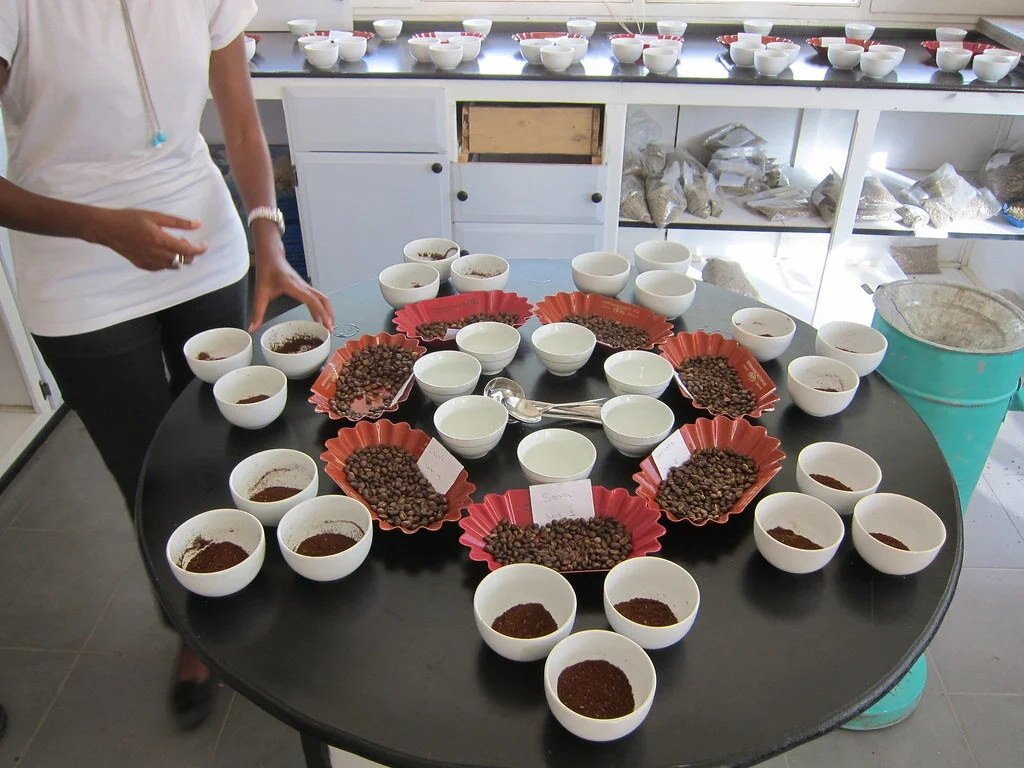BY ALAYNA SUBLETTE, CHLOE ADCOCK, JOAN ABBOTT, AND SAM AMAN
Alayna Sublette, Chloe Adcock, Joan Abbott, and Sam Aman recently graduated with their masters’ from the International Development program at the Johns Hopkins University School of Advanced International Studies (SAIS). As graduate student researchers, the team of four supported TechnoServe, a nonprofit, to write a research paper on the landscape of investment in agribusinesses that source from smallholder farmers. Published in April 2021, the team’s final report contributes to evidence on the commercial and development impact potential of smallholder-sourcing agribusiness models.
The SAIS International Development (IDEV) Practicum allows students to work directly with public, private, and non-governmental organizations as a capstone to their graduate studies. The 2021 IDEV Practicum Blog is a seven-part series that chronicles the virtual travels of IDEV students who take on client projects.
With an average farm size of 444 acres in 2019, agriculture in the United States tends to evoke images of sprawling pastures, massive combine harvesters, and relatively few people. However, that is a far cry from how most farms globally appear. Smallholder farmers with less than five hectares (about 12 acres) of land account for 95% of the world's farms. While large-scale farms produce large amounts of food globally, in both Asia and Sub-Saharan Africa, smallholder farmers are responsible for approximately 80% of the regions’ total food production. Continuing to feed the world will rest on providing much-needed financial and technical support to these farmers, as well as the agribusinesses they supply.
The UK Foreign, Commonwealth and Development Office's Commercial Agriculture for Smallholders and Agribusinesses (CASA) program aims to do just this, by building the commercial and development case for investing in smallholder-sourcing agribusinesses in low- and middle-income countries. CASA partner TechnoServe, which operates the program's technical assistance facility for agribusinesses, engaged our practicum team to help build the evidence base around investment in the sector.
To do so, we spent the academic year conducting primary and secondary research to author a learning paper for the CASA program, entitled "Sourcing from Smallholders: Complex Challenge or Commercial Opportunity?" We mapped the landscape of investment in agribusinesses that source from smallholders by quantifying the share of total agricultural investment that flows to these businesses and synthesizing investor and agribusiness perspectives on the key challenges and opportunities in this space.
What immediately became clear from our desk research was that quantifying smallholder-sourcing investment flows would be no easy task. With no harmonized standards for reporting, many investors don't tag portfolio agribusinesses by whether they source from smallholders, plus the lack of an internationally agreed-upon definition of a smallholder made it all the more difficult to classify investment flows. The bulk of this paper was going to have to come from qualitative primary research.
Armed with our multilingual interview guides, Zoom accounts, and a few dozen cups of coffee, we got to work conducting in-depth interviews with 19 impact investors, private equity firms, development finance institutions, and agribusinesses across Africa, Asia, Europe, and the US. The diversity of investor types, as well as agribusiness types (in value chains ranging from horticulture to poultry to cash crops), allowed us to tease out important contrasts and, crucially, similarities. Our research found that the investment gap in smallholder finance (estimated at $170 billion globally) stemmed mostly from high perceived financial risks , with good reason: Smallholders are fundamentally different from large commercial suppliers, and incorporating them into supply chains at scale often means providing additional technical and agronomic support.
Even so, a consistent takeaway from our interviews was that doing business with smallholders can be worth the effort and then some. Folding some of the world's poorest people into win-win commercial arrangements takes careful, context-specific planning. But when done right, it can pay serious dividends, from both a development impact and a commercial perspective. For those interested, our learning paper offers an in-depth look at the opportunities and challenges in this sector, along with recommendations to optimize investment and help the world's 500 million smallholder farmers feed a growing population.
PHOTO CREDIT: By Caffe Vita, licensed under CC BY 2.0

